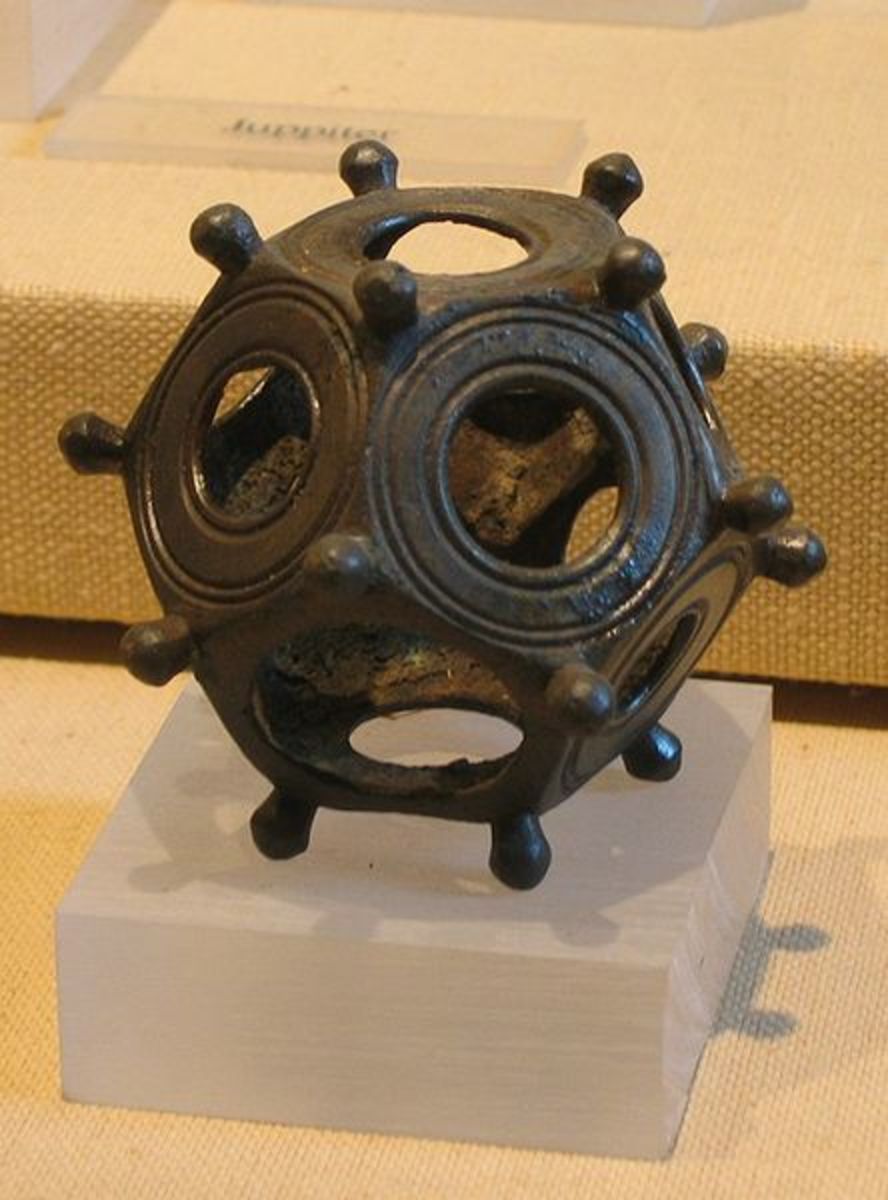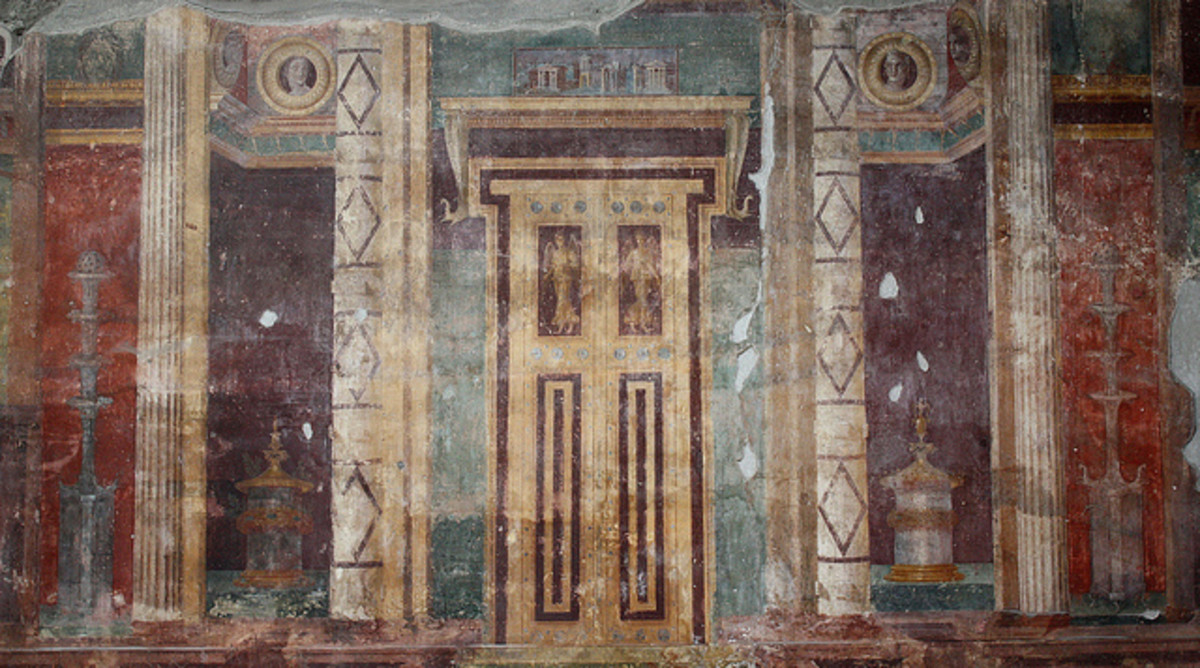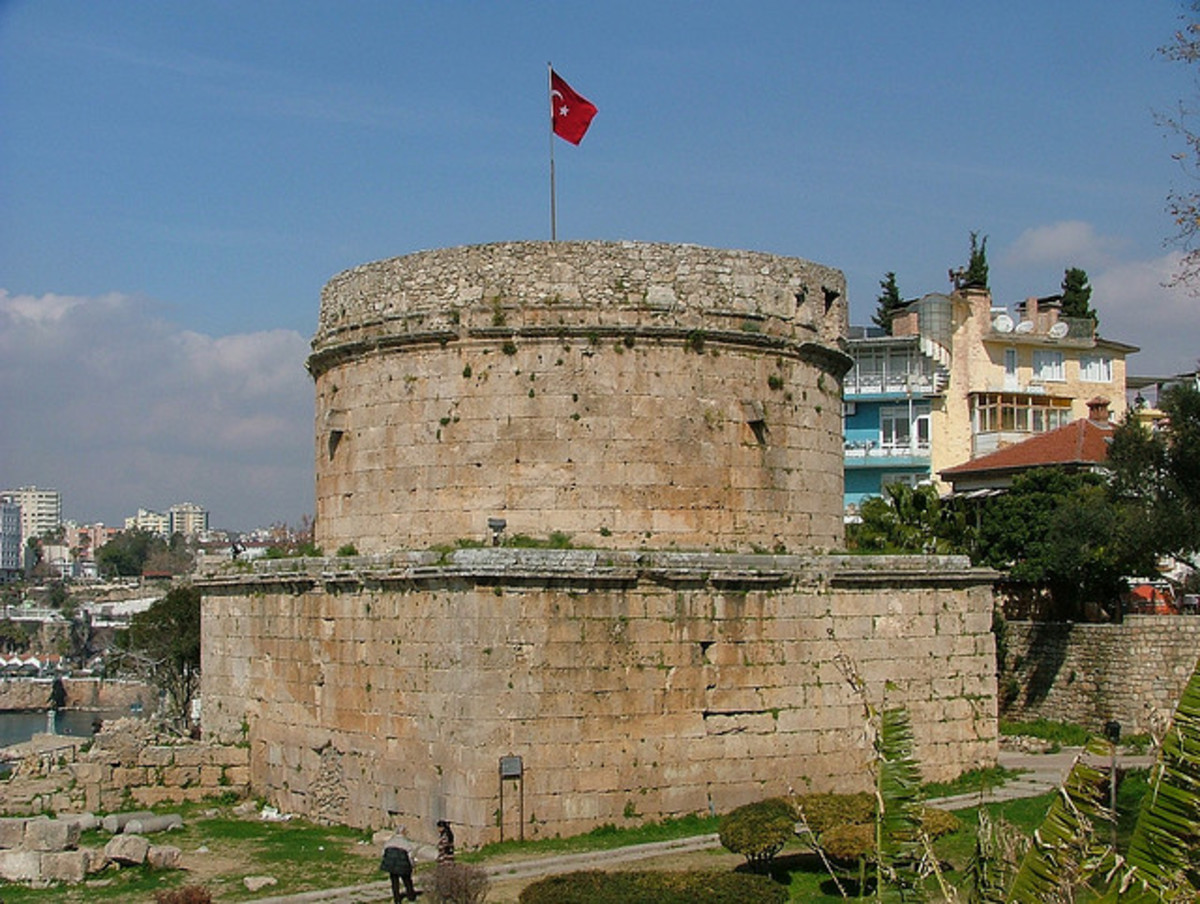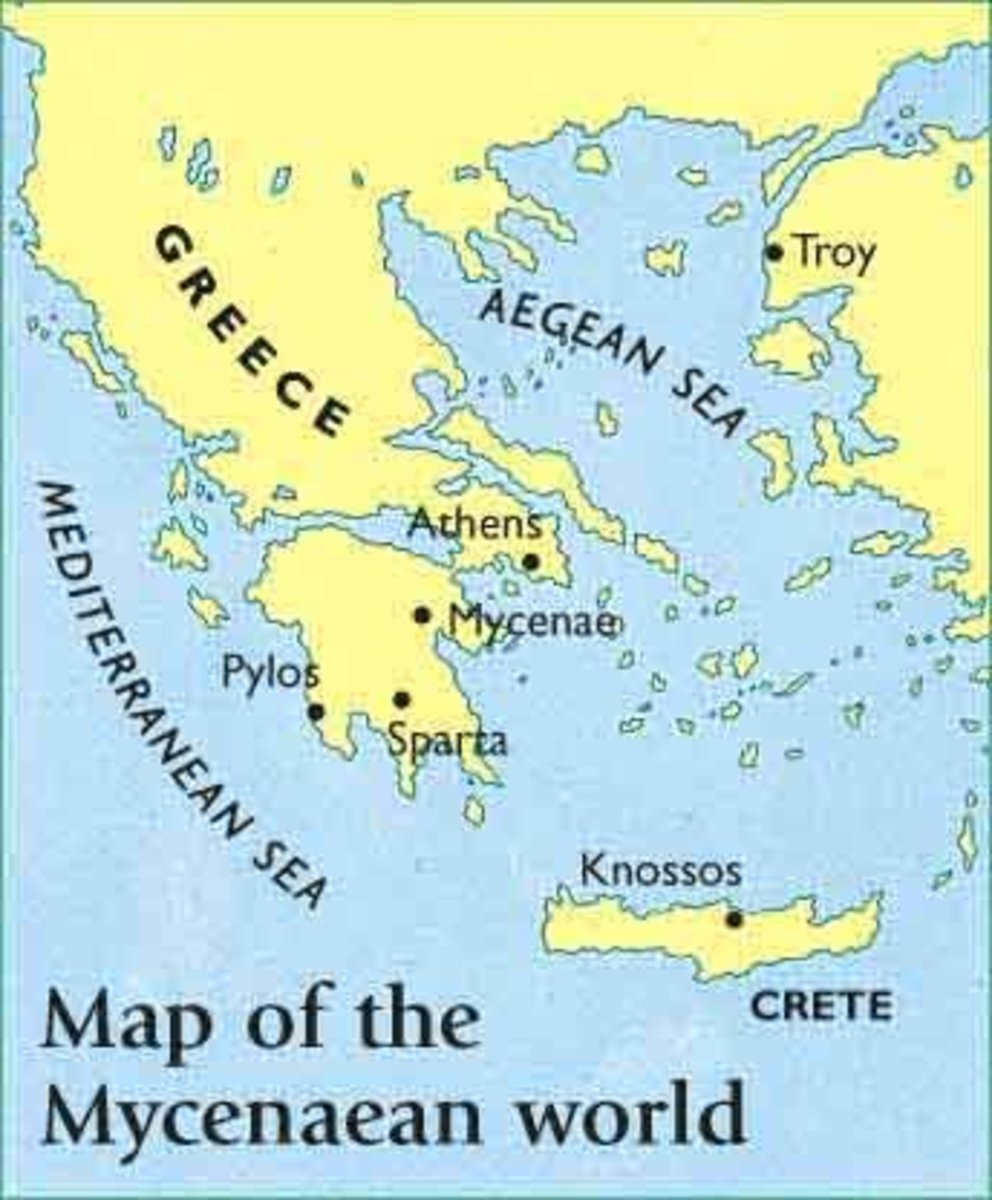- HubPages»
- Education and Science»
- History & Archaeology»
- Ancient History
Ancient Roman Toga
Togas became one of the most well-known symbols of Ancient Rome, and many people, when imagining the life of Romans, usually portray them as wearing togas. Togas were indeed a notable and important part of life in Rome and if you were a respected citizen, you would have to have one. But aside from that, people often have little idea to no idea about how the clothes worked and what they actually looked like. Togas were much more than just simple bedsheets wrapped around a body.
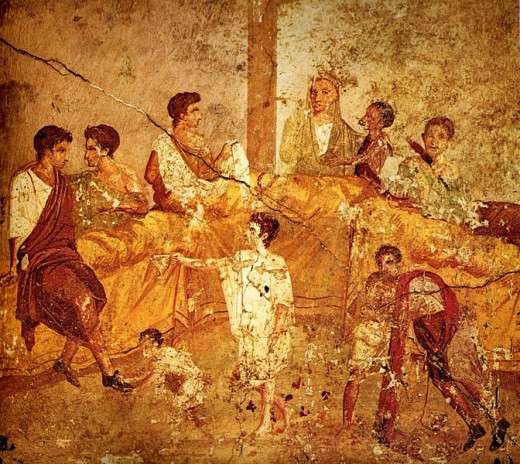
Owning a toga
Most of the people did not own a bunch of togas in great variety, for most of the citizens it was certainly not how we are used to having closets filled with different fashionable clothes these days. For patricians and senators, or the emperor himself, it could of course be like that, but the regular citizens, especially plebeians, could never afford a lot of these fancy clothes. In many cases, if the family couldn’t afford new togas, the son would wear one left from his father after he died. Wearing a toga was allowed only for Roman citizens, and if a slave or a foreigner was caught wearing one they would be punished by law. Though plebeians had togas for special occasions, in most cases they were wearing nothing but a tunic made of cheap wool. Slaves were specially trained to fold the toga properly while they would dress a rich man, for the cloth was too big to be taken on without help.
During the reign of Emperor Augustus a law was created requiring every citizen of Rome to wear a toga on all the public occasions, although throughout the time of empire the necessity of wearing a toga changed, becoming less and less strict through centuries, and leading to wearing togas only on very special occasions. It was considered extremely rude to not meet a guest while wearing a toga, so in case someone visited your house, especially if it was an important person, you had to hurry to wear one. This kind of reverence for the garment existed long before the empire, evident in the anecdote about the famous Cincinnatus, one of the great heroes of Rome.
The story goes that Cincinnatus was plowing the field of his farm when a group of senators arrived at his house to tell him of a mandate that appointed him as dictator. Seeing his prestigious visitors walk up the path to his house, Cincinnatus called to his wife and told her to quickly fetch his toga so he could receive the guests in dignity, as at that time he was dressed in a simple farmer’s tunic that was no doubt dirty from all of the work he had been doing.
Togas weren’t usually worn by the women during imperial times, for respected women had stolas and pallas as their alternative to a man’s tunic and toga.
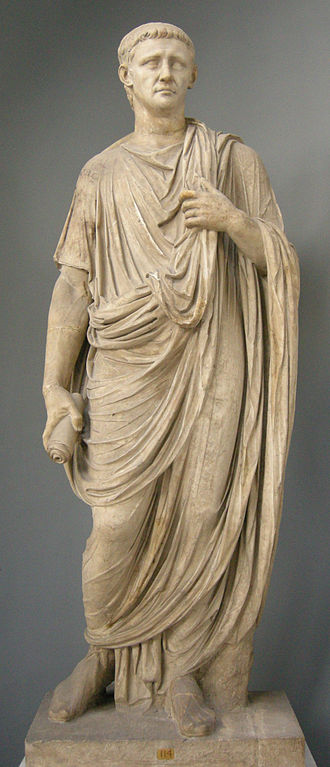
Fabrics and shape
Togas were made of different fabrics, depending on how much money you had to spend on one. The regular toga during the Roman Imperial times was about 6 meters (20 feet) long, and was usually made of wool. The poorer citizens had togas made from a thin, cheaper kind of wool, or any other fabric they were able to get, while the richer nobles naturally owned clothes made from quality fabrics. Rich citizens would also have togas made of linen, which was considered a more expensive and highly prized material, and on rare occasions silk (known as sericum), which was extremely fancy and rare. One Roman pound of silk costed more than a dozen slaves, so only very rich citizens were able to get it.
Clothes were not something very affordable in the times of ancient Rome. The process of making and refining fabric was difficult and took a lot of time, while the machines and factories that we use today, which make it more affordable and simplify the production, weren’t invented yet. In these days people were still using wooden looms to weave all of their clothes.
It is not known what the exact shape the Roman togas had, for there are no surviving examples, but historians suggest that it most likely was a semi-circular piece of fabric, its borders colored in some cases. Though its shape changed from the times of the republic, going from round corners into more square shape.
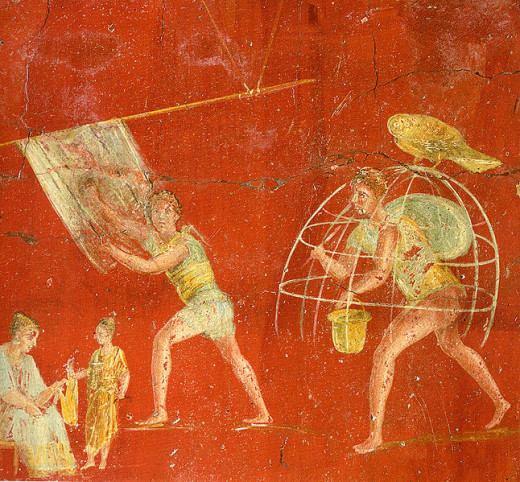
Cleaning a toga
Cleaning and laundering clothes in Ancient Rome was usually done by fullers, or launderers. Laundering clothes was a rather complicated process, so the launderers had their own cleaning shops where citizens brought their clothes and fabrics for cleaning and washing. The process was very complicated and smelled horribly, so it never happened at home.
Laundering clothes included several steps. First the fabric was put in a mixture of chemicals for some time, often with urine as one of the main ingredients, which fullers took from public toilets beforehand, and in this liquid the cloth was rubbed and scrubbed and stamped by the feet of the fuller himself. The next step was cleaning the chemicals from the fabric and refreshing it. It was done in pure water and basically included nothing but rinsing a garment for some time in multiple baths until the water ran clear. After washing, the cloth would sometimes be renewed with sulfur if it was white, as sulfur made colors fade to a pure white, and then brushed with the skin of a hedgehog to make the texture of the fabric soft again. After that the garments were put under a press to smooth them out and make them look almost new.
Togas were considered less valuable after they were first laundered. And even though such a toga could still be presented to someone as a gift, it was considered a one of a lower value than a brand new toga.
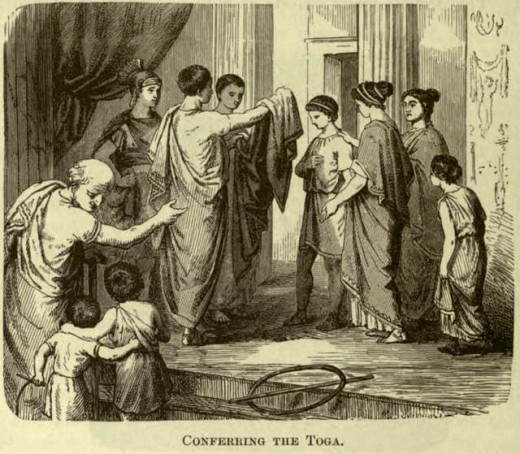
Kinds of togas and their colors
There were many different kinds of togas, many of which were very different from the simple white garment everyone stereotypes the Romans as wearing, although this was still the most popular type, but not the only one worn by romans.
At first there was a toga praetexta, the white toga with a purple stripe 2-3 inches wide on it. Toga praetexta meant a special status of the citizen and was worn by high ranking officials, by priests and by boys under the age of puberty. For the latter that toga also meant that they had to be protected from any kind of obscenity and rude language in front of them, and the toga was considered a rather sacred garment.
After a boy would grow up he would get a toga virilis. This toga would be given to him during a very special maturity ritual, and would mean that he is a grown man, that he isn’t as dependent on his family as before, and that he can marry. Many young men in the countryside were getting their toga virillis during the Liberalia celebration, which was a holiday dedicated to the Roman god Liber, who among other things was associated with boys growing up and becoming men with their responsibilities and their freedom of will. The time when a young man would get toga virillis would vary but usually it was at the age of 15-16 years old. The look of a toga virillis wasn’t anything special, though, for it looked like a plain white toga.
If you would be a regular Roman citizen you would no doubt own a toga pura, a general cloth of the Roman people. The toga pura was a simple, traditional toga made of natural wool, without any dying or additional whitening, so it had a greyish-white color.
Toga candida, in contrast, was a toga whitened by chalk, mostly used for political purposes. The toga candida was usually worn by candidates seeking political office, often during their speeches to gain supporters. It was a very white and impressive toga and you can imagine how great a talented Roman politician could look while giving his speech in this pure white cloth.
Toga pulla was a toga of mourning and was made of dark-colored wool, often dark-grey and brown.
Toga trabea was a very original and beautiful multi-colored toga worn by the auguri, a very special religious class of Roman citizens.
Toga picta was worn by the emperors. It was a very beautiful, richly decorated and embroidered toga. The toga was completely purple, which was considered the color of the rulers and gods. Some statues of the gods in Rome were also wearing a purple toga, carved from purple stone or painted on, which makes you understand how noble, regal and deeply spiritual the color was for the people. It was also often worn for the special occasions like when the emperor opened the games.
Although in our days it is impossible to find the actual remains of togas, the clothes can be seen on the magnificent Roman statues, depicting the fashions of the empire in its different times. They help us see and understand how complicated it could be to wear toga or to walk in one, although they all look very noble and impressive, which makes people realize why the cloth was so loved by the Romans.

